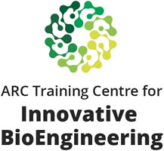
PROFESSOR
GREGG JØRGEN SUANING
BSc California State University, MSc California State University, PhD UNSW
Professor of Biomedical Engineering
School of Aerospace, Mechanical and Mechatronic Engineering
Professor Gregg Suaning has more than a quarter century of expertise in biomedical engineering with a career that combines industrial and academic experience. His primary focus is sensory bionics – that is, the restoration of senses through electrical neuromodulation. He began his career in this field in 1992 with Cochlear Limited, and was an instrumental contributor in seeing this life-changing device become a mainstream therapy for overcoming deafness. He continues to contribute to the next generation of these devices through ARC Linkages Projects. Suaning’s PhD was awarded in 2002 and included pioneering work in the field of visual neuroprostheses for the profoundly blind. While at the University of New South Wales, as a Professor of Biomedical Engineering, Suaning was Program Leader in a $50M ARC Special Research Initiative from 2010-2015 and continues this work towards finding therapies to overcome blindness. He was awarded the Bartimaeus Award by the Detroit Institute of Ophthalmology for his service to the blind community and his contribution towards establishing a culture of collegiality in the field of prosthetic vision. In 2017, he began the current chapter of his career by taking up the position of Professor of Biomedical Engineering at the University of Sydney where he aims to expand his research beyond sensory neuroprostheses and into new areas of medical therapies.
Research Highlight 1
Professor Suaning has made a number of contributions to the field of cochlear implants for the deaf. Many of these have contributed to the extraordinary reliability of these devices. A key contribution he has made is in the configuration of the receiving inductor of the implanted device.
Early designs of cochlear implants resulted in a number of device failures, primarily as a consequence of daily (fearless) activities of children. Suaning’s research found that an alternative configuration could produce equivalent electrical efficiency but with vastly improved resistance to damage.
Research Highlight 2
A key obstacle in the fight against blindness through the application of neuromodulation is the spread of current beyond the site to be targeted by electrical stimulation.materials into scaffolds that reproduce bone architecture and porosity.
RESULT
Professor Suaning’s research found that the layout of a stimulating electrode array in a hexagonal mosaic afforded the opportunity to stimulate individual hexagons where the centre electrode delivered the therapeutic stimulation and the six surrounding electrodes collectively recovered the injected charge. This resulted in significantly more focused neural activation.
Research Highlight 3
A key drawback to the hexagonal stimulation described above is the efficiency of stimulation. Because the electrode array is planar, the stimulation naturally tends to shunt directly from the stimulating electrode to the surrounding return electrodes. With the targeted neurons situated above the electrode array, a means of ‘drawing out’ the electric field was required in order to establish efficient and plausible use of electrical stimulation to elicit visual perceptions.
RESULT
Suaning’s research established that significant improvement to hexapolar stimulation could be achieved by dividing the return path for stimulation into two parts: a hexapolar part and a monopolar part. By introducing the monopolar part, the efficiency of stimulation is significantly improved. By maintaining the hexapolar part, the focus of stimulation is retained. The overall result is more meaningful and more efficient stimulation that allows for smaller electrodes to be used.
Research Highlight 4
To-date, electrical stimulation of the visual system has been unable to mimic the exquisite and vastly complex functionality of the natural visual system. Key to restoring true visual capacity is the ability to more closely mimic natural function.
RESULT
Suaning and his team have established methods of turning off particular parts of the visual pathway to more closely follow what a functioning eye delivers to the brain.
Research Highlight 5
Finally, in order to demonstrate the capacity to restore vision to the blind, a complex medical implant that addresses the myriad safety and efficacy considerations is required.
RESULT
Suaning’s team has devised the “Phoenix 99 Bionic Eye” visual prosthesis. This device is currently completing its pre-clinical testing and aims to be implanted in humans in the near future.

